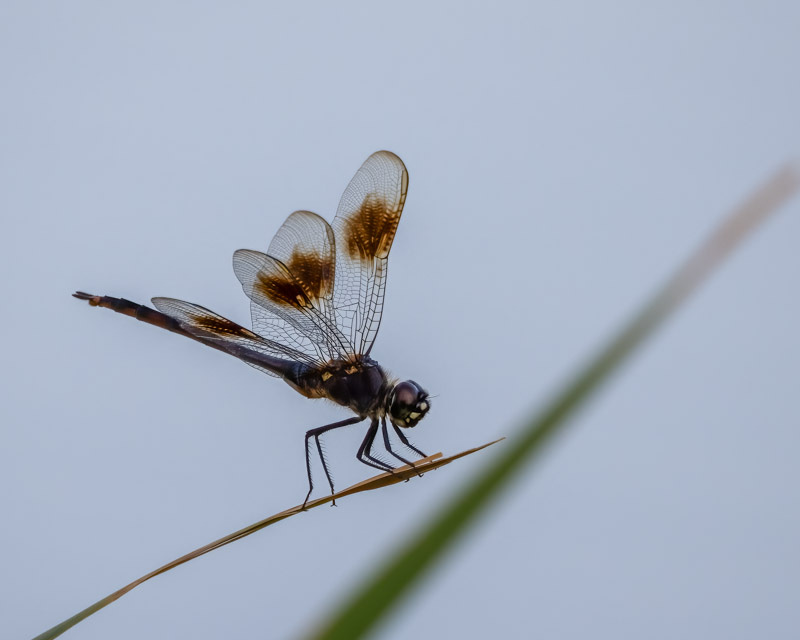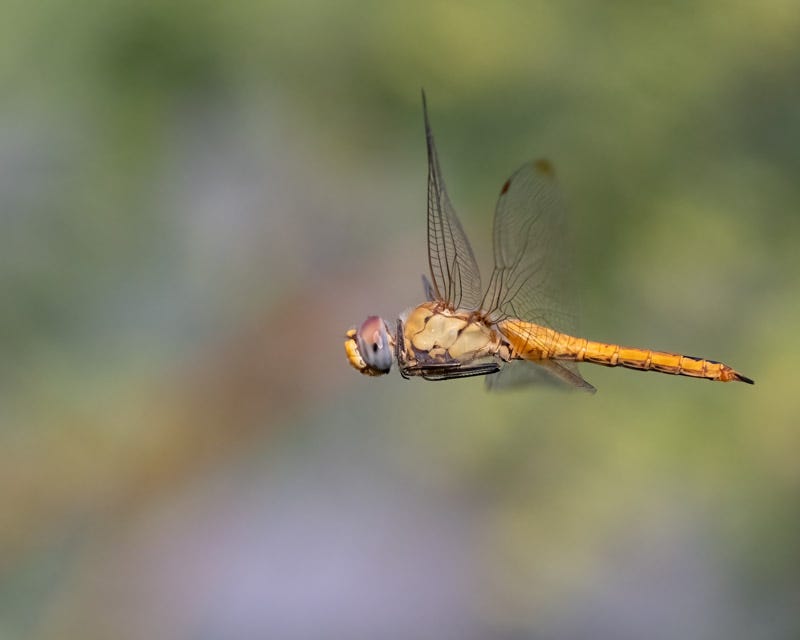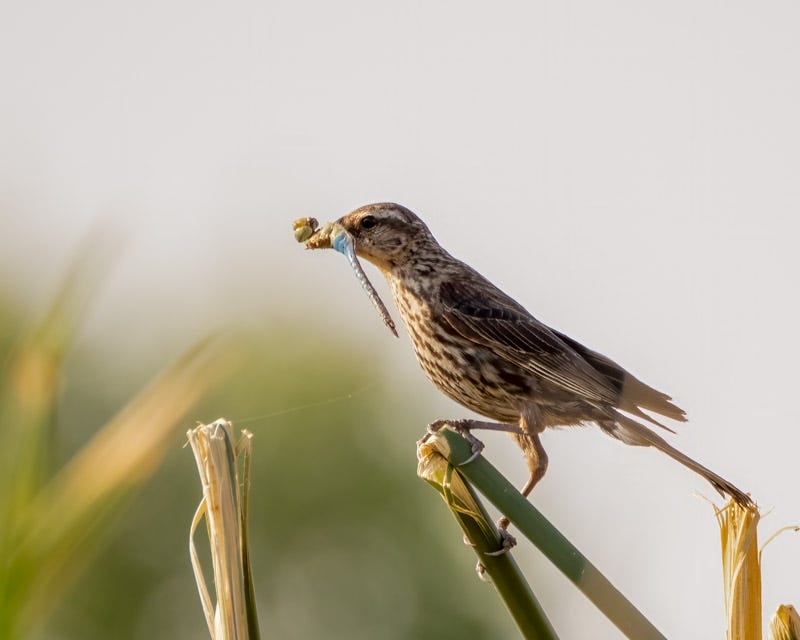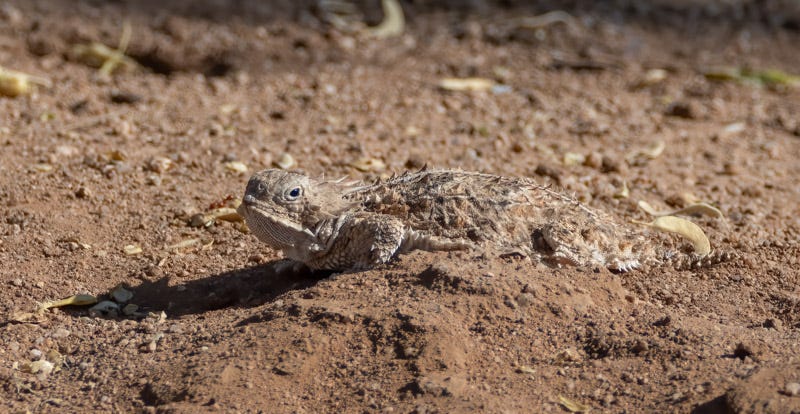Random July Photos
Aug. 5: An assortment of summer photos
Here are some photos featuring different critters from a variety of July outings. Dragonflies are in southern Arizona year-round but many more emerge from their larval stage during the summertime. We saw this Four-spotted Pennant dragonfly at the Sewailo Golf Course in July. This was an unusual find for us. The Four-Spotted Pennant was named for the four white spots on its face, not the four dark areas on its wings.
From another perspective, you can see how slim this dragonfly appears. Four-spotted Pennants often perch far from the water.
Summertime brings many different flycatchers and kingbirds to southern Arizona. Sweetwater Wetlands often has a variety of these birds and we found a Tropical Kingbird in the first big pond. It was perched next to a female Vermilion Flycatcher and the size difference was notable. Both birds make a living the same way- perched high where they can spot nearby insects to snatch. Here is an old Tucson Audubon blog about Tropical Kingbirds: https://tinyurl.com/4x7rak2a
Another interesting dragonfly was seen at Sweetwater. This is a Wandering Glider. Wandering Gliders are the most widely distributed dragonfly in the world. This one repeatedly returned to a space along the trail and hovered mid-air to claim its territory.
I watched the dragonfly return over and over again. It would dart off, either to find food or to defend its territory, and then it would return to the same airspace.
A Cooper's Hawk flew over and landed in a nearby mesquite tree.
As soon as the Cooper's Hawk landed, a Bobcat strolled out from under the tree and walked away. This is a female bobcat, very skinny due partially to the summer's stressors but more likely from the hard work of caring for this spring's kittens.
Later at Sweetwater a female Red-winged Blackbird flew out of the reeds with a dragonfly in her bill. The blue abdomen and green eyes of the dragonfly let us know this is the very common Blue Dasher. Because the Blackbird flew off with the insect I imagine she was taking it back to the nest to feed her young.
And back to Sewailo.....as we were leaving we saw this Regal Horned Lizard flattened in the sand along a trail of ants. It was picking off the ants one at a time. As we approached, it stopped eating to carefully watch us.
Either the red ant in the photo below was very brave or it was making a very dumb life decision. In any case, I thought this was fun to see. We walked off, leaving the lizard at peace to pursue its meals.
As a kid, I used to call these lizards “Horny Toads”. Regal Horned Lizard is a much classier name. https://www.desertmuseum.org/books/nhsd_horned_lizard.php











